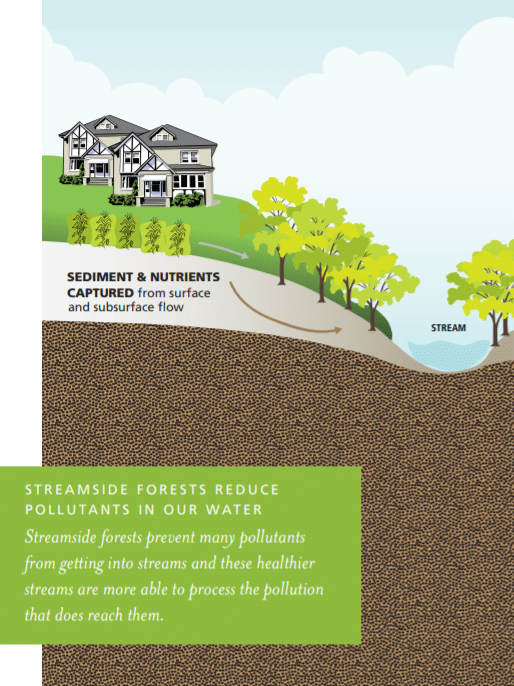Since 1982, Stroud Water Research Center employees and volunteers have helped plant hundreds of thousands of trees in Pennsylvania, beautifying the landscape while restoring and preserving water quality. Every tree we plant plays a vital role by providing a natural buffer zone between our land use and the stream it protects. Each tree helps prevent pollutants from entering our water supplies and provides lasting benefits of shade, beauty, and the natural habitat essential to a healthy ecosystem.
By planting streamside forests, you…
💧 Improve water quality by reducing pollution
💧 Lower drinking water treatment costs
💧 Replenish groundwater supplies
💧 Reduce flooding
💧 Provide habitat for wildlife
💧 Increase property values

Grow Your Knowledge of Streamside Forests
💧 “In Support of Streamside Forests” Handout and Webpage
💧 Featured Resources: Explore guides and tools on streamside forests from our watershed restoration department.
💧 Podcasts: Check out the growing list of podcasts with our watershed restoration department, with topics like “Good Fences Make Good Water,” “Healthy Streams for Healthy Herds,” “Trees Can Be a Stream’s Best Friend,” and “Small Streams: The Heart and Soul of Waterways.”
💧 Videos: Whether you’re a junior stream scientist, parent/caregiver, educator, or farmer, our watershed restoration videos are worth checking out.
💧 Publications: Read the science behind streamside forests in these watershed restoration publications by Stroud Center scientists and our partners.
Connect Youth to Streamside Forests with the Freshwater Ecology Unit!
Originally designed to support educators and students visiting Stroud Water Research Center for boots-in-the-water education, our Freshwater Ecology Unit actively engages 3rd-8th grade students in stream ecosystems while meeting Pennsylvania State Standards. Check out these hands-on activities and printable handouts on streamside forests, watersheds, food webs, aquatic insects, trout, and so much more! Download the unit

